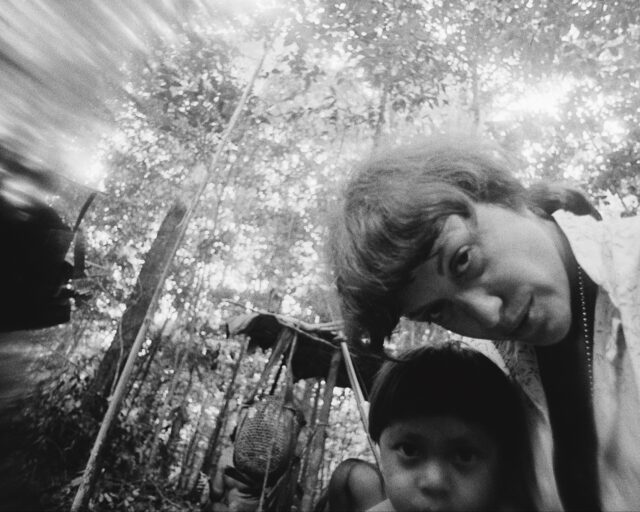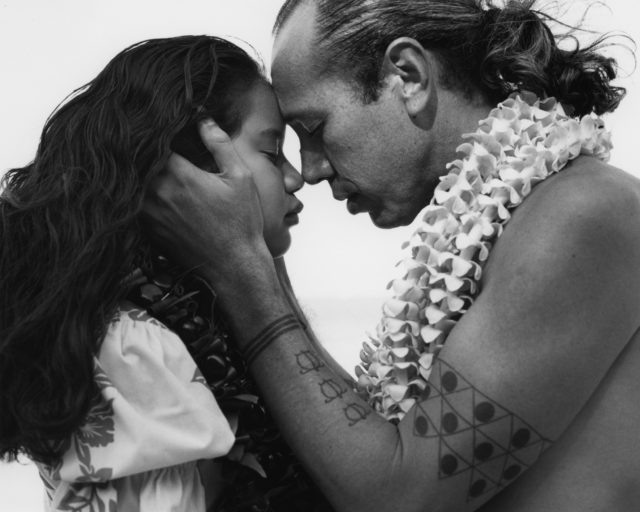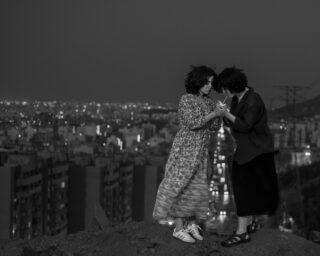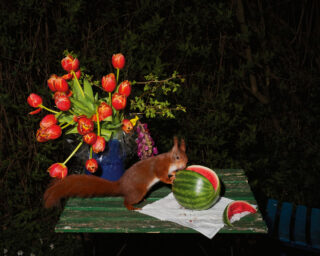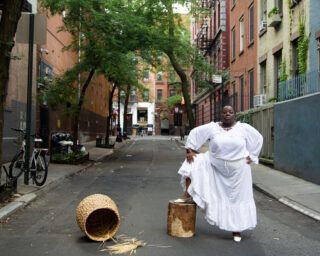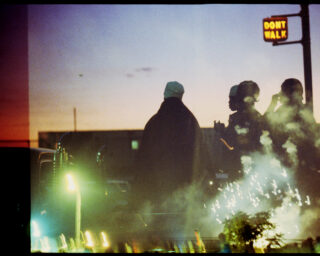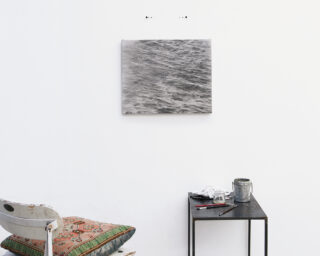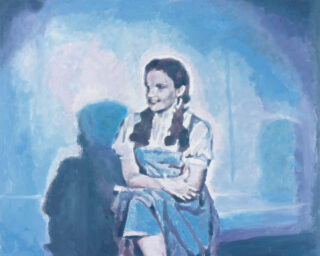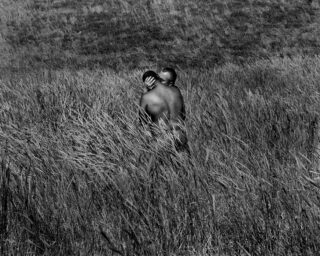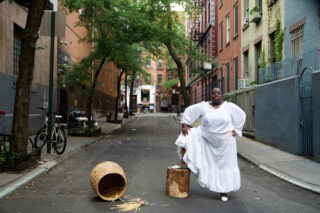In Performances and Photography, Rebecca Belmore Faces the Monumental
As a multidisciplinary artist working in performance and lens-based media, Rebecca Belmore creates scenes of aching endurance and forceful grace. Since the 1990s, Belmore’s images have probed the politics of First Nations representation in Canada, often melding the photographic with the tactile, as with her very first portraits, in which the Anishinaabe artist’s face is decoupaged onto cut wood, in sly subversion of the wooden “Indian” heads that dot many rural landscapes and settler imaginations. Whether placing subjects—often her sister, Florene—in strange architectural contortions of the body, or featuring materials as organic as a wash of clay or a strip of cloth to parse through the pain of state violence against Indigenous people, Belmore’s work definitively expands the field of conceptual photography to which artists such as Cindy Sherman, Suzy Lake, and Shelley Niro belong.
Earlier this year, the curator Wanda Nanibush, who organized the touring exhibition Rebecca Belmore: Facing the Monumental, spoke with Belmore about the power and possibilities of visual reenactment. As Belmore notes, “The photographs re-create the performer who is being watched but refusing the gaze.”

Wanda Nanibush: Rebecca, how did you get started in art making?
Rebecca Belmore: Well, I went to art school in Toronto, to what was then called the Ontario College of Art. I came to the big city from Thunder Bay, which is an industrial logging town, a railway town, a blue-collar, working-class kind of city. For me, getting out of there was tough. By that I mean that it was a moment in my life when I was looking at racism head-on. It’s a town that is very much Indigenous and non-Indigenous—or, you would have said “Indian” and “white” at the time. Coming to terms with that is what drove me out, and thankfully, it drove me into the art practice that I have now.
Nanibush: You started out in sculpture and then moved into performance. Can you speak a little about the connections between them?
Belmore: My recollection of that time, in the late ’80s, was that there was a lot of appropriation going on in contemporary art. I was a young artist in the middle of this rushing river, where I thought art was a safe place. And then you realize, Oh, my God, there’s a lot of trouble here. It was a turbulent time in terms of having a better understanding of what my role would be. That’s how I gravitated toward performance art. So my practice began when I started thinking about how to be in that moment.
Nanibush: You made your first photographs, Five Sisters, in 1995. Why did you move into photography at that time? In this early photography, you used yourself as the subject. In Five Sisters, you also used a different kind of material. The images weren’t printed on paper and put in frames. The framing itself had a lot of significance for the meaning of the work.
Belmore: Yes, I decoupaged photographs onto organic cut pieces of wood, which is something that you would find in Indigenous homes—what we would call our own bric-a-brac. I was working with our own ideas of ourselves as Indians, as Native people, as Indigenous people.
At that time, I was living in Sioux Lookout, Ontario, and I had very little money. Michael Beynon, my photographer friend, helped me. I played the roles of these five sisters, which were visual representations of women I would see in my community. One of the images was taken outside of this town called Vermilion Bay on the Trans-Canada Highway. There’s a big wooden female “Indian” head along the highway. I had my profile photographed against the sculpture. I was looking at the depiction of us as Indigenous people within this remote and rural setting in northwestern Ontario.
Nanibush: Talking about the early ’90s, there was the use of humor in artwork and staging scenes you were quite in the center of all that.
Belmore: It had a lot to do with the climate of art at that moment, where it made sense to me to be the art, to be the performance artist—to wear the work, to be inside the work, to exhibit the work. It was a way for me to navigate the terrain that I was working within. I thought to be within my own skin was the most authentic thing that I could do, from my perspective as an Indigenous woman.
Nanibush: Do you feel like you had to clear out the representations of us—First Nations people—first before you could do something else?
Belmore: Absolutely. It was really a way to be subversive with humor and irony, highlighting the dark with the witty.
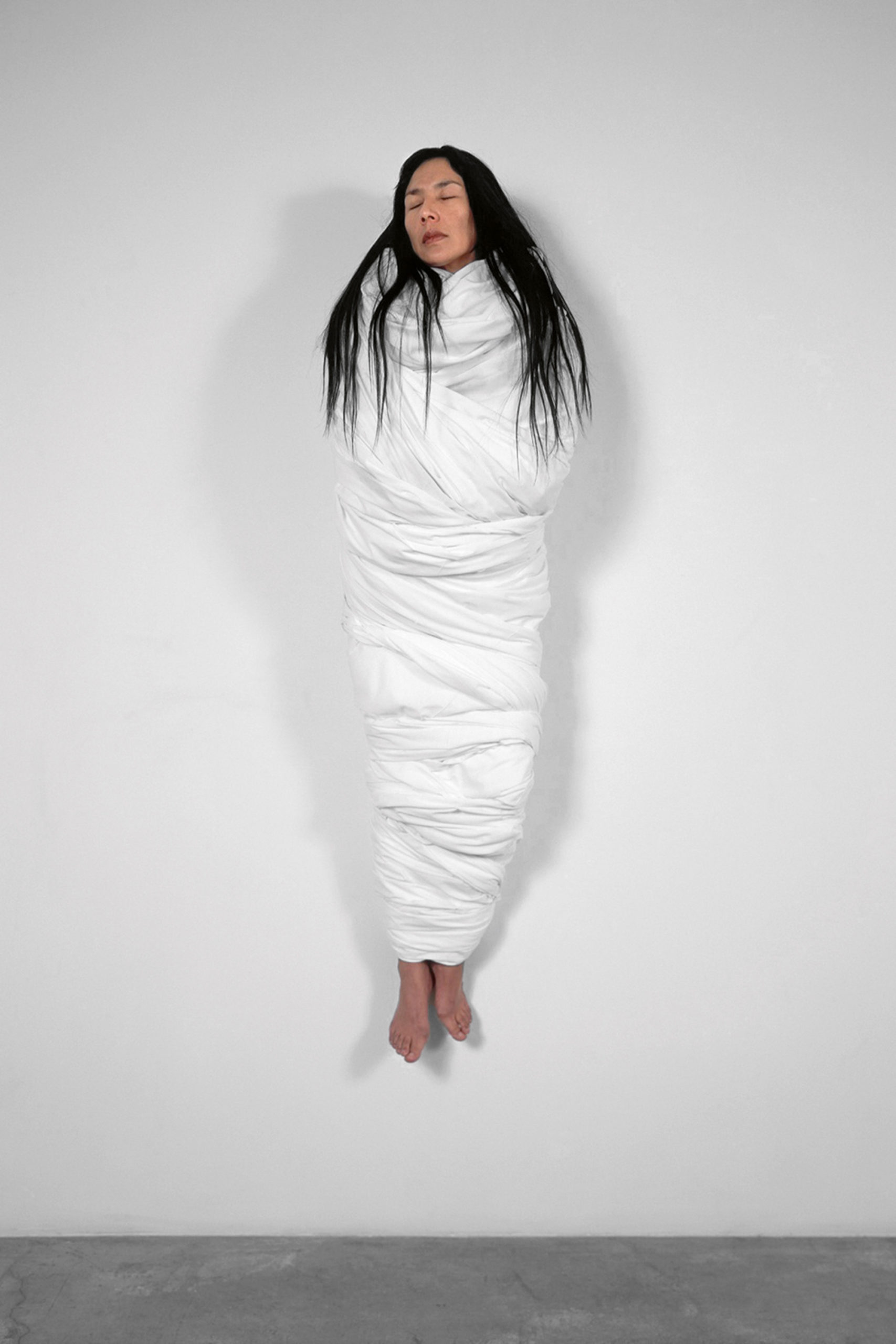
Nanibush: You collaborate with photographers and models. And you tend to use your sister as your collaborator. Do you want to speak a bit about both sides of that collaboration, for example, in Untitled 1, 2, 3 (2003)?
Belmore: There has to be the element of trust. I trust my sister, of course. I worked with Donna Hagerman on Untitled. The photographers I’ve worked with have really stood back and tried to understand what I am trying to achieve and give me space—
Nanibush: —to think through what you want to do.
Belmore: Yes. I have to have a clear vision of what I am going to do, because photography requires having all the materials, the model, and the constructed space ready for the shoot. Everything is precise. I can direct the creation of the image I have in my mind by physically standing back during the shoot. Composing the model and what is in the frame, for me, is the beauty of it.
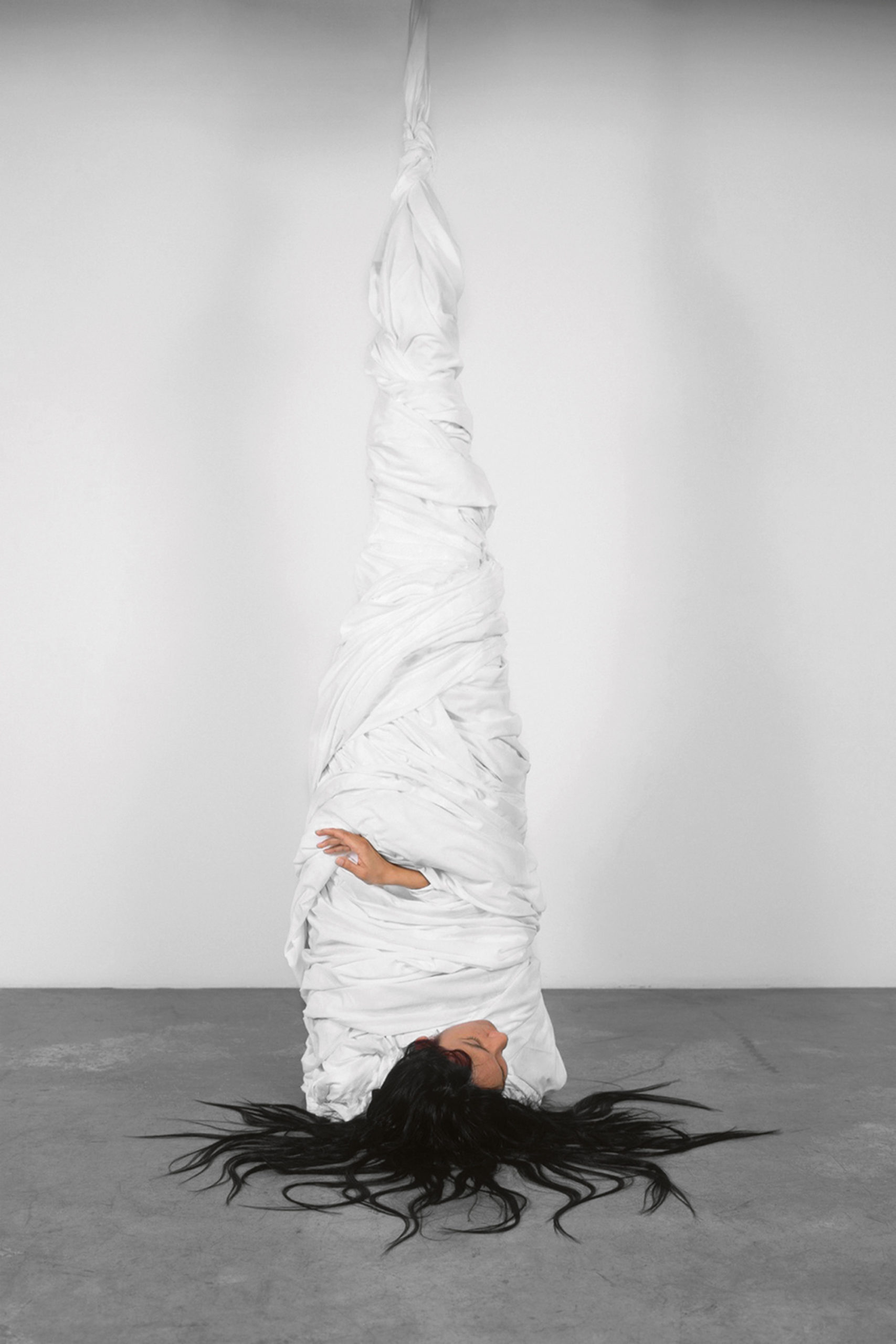
Nanibush: Is the creation of an image a performative act?
Belmore: It’s a performative act for me because it’s live in the space. For example, with Untitled, we actually hung my sister Florene on the wall.
Nanibush: Can you speak a little more about the process of making Untitled and White Thread (2003)?
Belmore: It was hard on my sister. But she was totally dedicated, which is what you look for in collaborators. I don’t think anyone else would have done that for me. For example, with White Thread, we had my sister bend and grab her ankles, a position she had to hold for forty-five minutes. We bound her body in a long coil of fabric and then placed her on a plinth.
Nanibush: You can feel the discomfort.
Belmore: Yes. She would yell out, “Okay, I’m going to give you five more minutes!” I have a special relationship with my sister. I think, more than anyone, she understands the place where my work comes from.
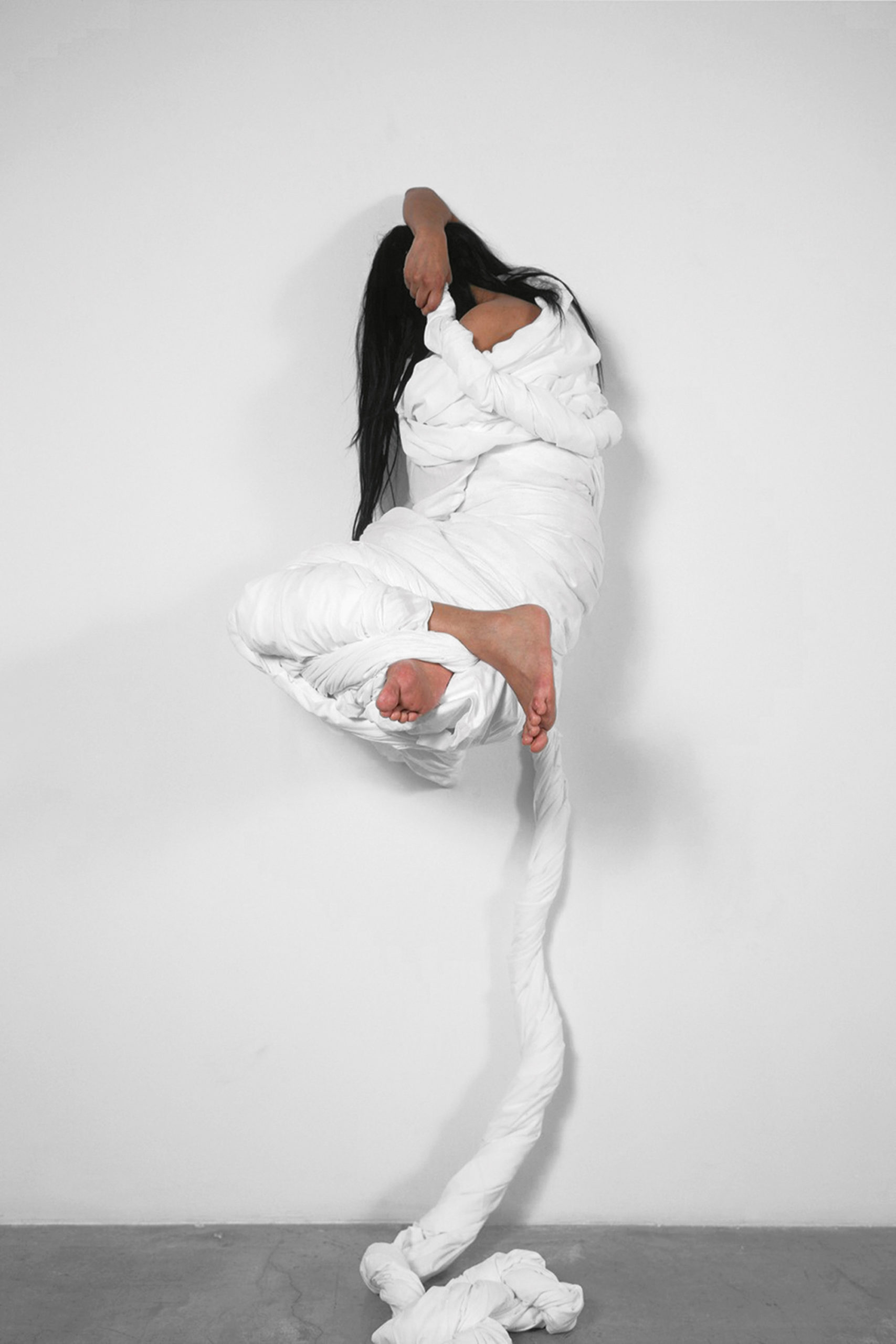
Nanibush: It’s a beautiful thing to witness. I was thinking also about your starting place. Because, really, you’re starting from material and an image that you want to make. At what point do meanings come into that? Or do you even worry about the meaning? Or do you just leave that for an audience to figure out?
Belmore: For White Thread, I knew I wanted to bind my sister up in that position. It was about endurance. The same with Untitled 1, 2, 3. She had to hold the poses for at least forty-five minutes. The triptych was shot in grunt gallery in Vancouver. We hung her from the wall in three different positions, which she held for the 4-by-5 camera. She had to be patient.
Nanibush: What was sparking these images of contorted and bound bodies?
Belmore: With White Thread, there was war in the Middle East, and I was thinking about women’s suffering, strength, and will to endure and survive. With Untitled 1, 2, 3, each image has different meanings for me. In Untitled 1, my sister is attached to the wall and has a kind of umbilical cord falling to the floor. I was thinking about the earth and the female body giving birth. Untitled 2 is the woman falling from the sky with her hair splayed on the floor, which could refer to Sky Woman stories. For Untitled 3, where she’s totally cocooned, I was thinking about metamorphosis.
My sister, hung on the wall, was, for me, the most shocking image—I felt it was about what Christianity has done to us as Indigenous people. But, at the same time, I saw her as a beautiful spirit. There was also a grace and a calm beauty to that moment when I saw her on the wall.
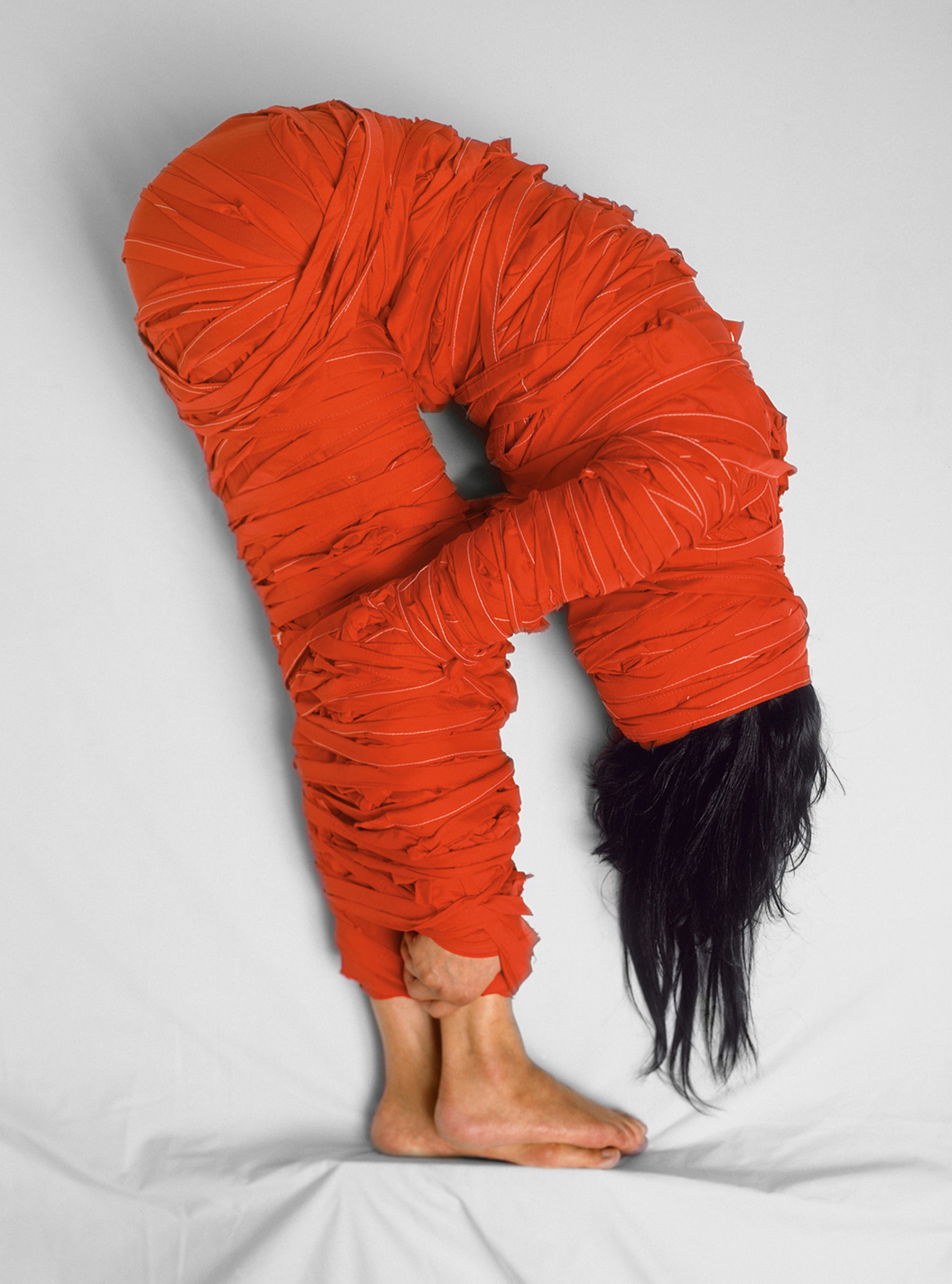
Nanibush: Technically, you can’t see your own performances until you watch the video or see a photograph later. Whereas, here, you got to construct it from the outside.
Belmore: When I’m doing a live performance, I am working on creating something which I think looks beautiful or good. At the same time, you can leave your body in your imagination and see how things look from the audience’s perspective. I trust that if it looks good to me it must look good to the audience. But with my photographs, I’m able to look at them as an audience member.
Nanibush: Which brings me to your latest series, nindinawemaganidog (all of my relations) (2017–18), where you are looking back at your own performance practice, picking certain works and certain moments in those performances to create in photographs. Can you speak to your choices of performances and to how witness, the first of the five photographs in the series, is based on your performance Vigil (2002)?
Belmore: The photograph was made in 2017. It’s a visual reenactment of the performance piece, which took place in Vancouver’s Downtown Eastside, shortly after the serial killer Robert Pickton had been charged with the murder of twenty-six women. I performed in the neighborhood where women disappeared. It was really emotional. At the same time, it was really grounding, in the sense that I had an opportunity to go to that place and scream the names of these women he had murdered. witness was made in the studio with my sister, Florene, instead of me. We reenacted that moment when I hammered nails through the red dress into the pole while trying to free myself. I was thinking about how the women must have fought to free themselves.
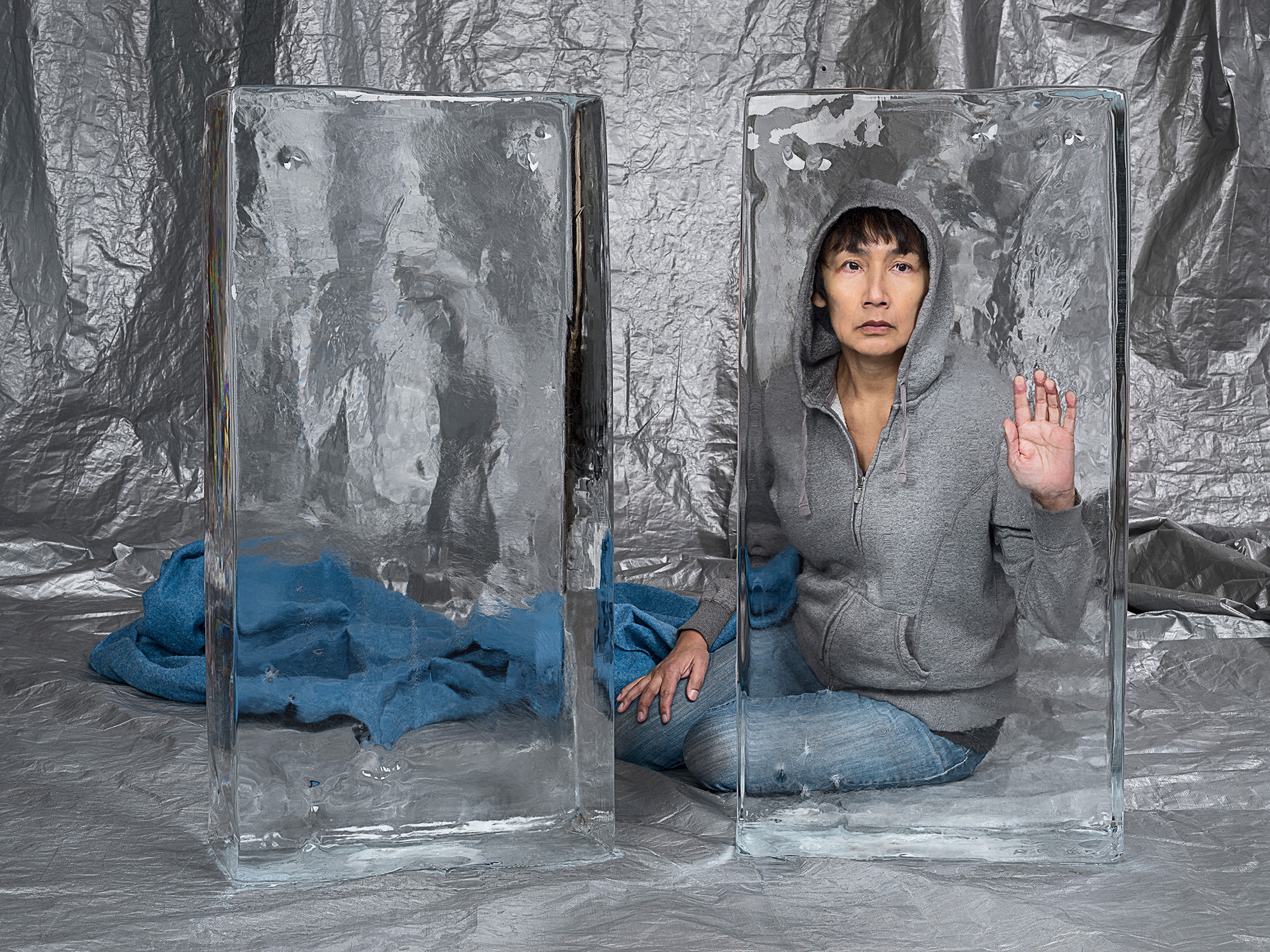
Nanibush: Even if it’s a memory of a moment in the performance, the photograph is a reimagining of the previous performance. It’s still a new work in that sense, because an image evokes all kinds of meanings, all on its own.
Belmore: And it was taken fifteen years later. I’m in a different place.
Nanibush: For Freeze (2006), the work that the photograph mother from the nindinawemaganidog (all of my relations) series references, you had the surname Stonechild carved into blocks of ice. But in the photograph, it’s Florene behind the ice.
Belmore: There is this woman looking through the ice at you. The ice forms a barrier. To me, she has an expression like she’s looking for someone, and there’s a sadness in her eyes. I was thinking about Neil Stonechild and his family, especially his mother, who lost her son to this horrible death.
Nanibush: The “starlight tours,” where Native men were driven by police out to the outskirts of town and left to walk back in the freezing cold. Stonechild’s death brought this racist practice to light.
Belmore: Yes. In mother I am trying to create an image that speaks to Stonechild’s mother, but also to the experience of many mothers.

Nanibush: keeper, from the same series, also feels like a memory from your performance work Clay on Stone done at the AGO [Art Gallery of Ontario], in 2016. In the live performance you had “painted” Walker Court’s stone floor with clay by hand.
Belmore: In keeper, the model has one of the buckets that I used in the live performance. The photograph was shot in a place that had an old, worn linoleum floor that resembled the color of the clay. My sister is washing the floor with a clay-soaked rag. Around her, you can see the clay starting to dry and crack, which brings up ideas of not only the land but also the absence of water—a parched earth.
Nanibush: All that moisture that we could feel in the air literally came out of the clay. You could feel it, and you could smell it. Why the name keeper?
Belmore: It’s about the idea of women having the knowledge to care for the earth. We’re living in these difficult times, and we have to rethink our lives. I don’t know if it’s possible.
Nanibush: Everyone says that we’re doing it right now, but I’m not convinced.
Belmore: But at least, with the current shutdown of the economy due to the coronavirus pandemic, we have a glimpse of the potential for change and for some kind of more reasonable—
Nanibush: Equitable.
Belmore: —equitable, sane way of living.
Nanibush: We’ll have to see about that. My main thought is, the earth is getting a big break that it needs right now.
Belmore: I think that’s amazing. The earth has a moment to breathe. Everyone can understand that for a moment. But I think the understanding will recede.

Nanibush: Something that you’ve mastered—an aspect of your work that draws me in and I know draws other people in—is this understanding of what a moment is. Both Fringe (2007) and State of Grace (2002) have that. You’re able to capture some kind of moment right before something transforms, or right before somebody breathes. State of Grace is one of these moments.
Belmore: In the photograph State of Grace, I used a white fabric that had a sheen to it. Florene is sleeping or dreaming in this work. When I saw the print, I was troubled by it because it was too pretty. I cut the image into strips and wrapped the top around a tube so that when it hangs from the wall it can move freely. Because of the movement from the air, it could be about living and breathing.
Nanibush: When we were doing the exhibition Rebecca Belmore: Facing the Monumental (2018), I included this work because I think people forget that you don’t just deal with the violent side. I was thinking about the fact that, in terms of representing Indigenous women, we don’t often see ourselves in states of grace.
Belmore: State of Grace and Fringe are connected: They both reference healing. In State of Grace, perhaps the woman is recuperating from an illness or simply dreaming. Then, with Fringe, the woman is reclining, and her wound is healing. I think ideas can come back, and works can haunt one another.
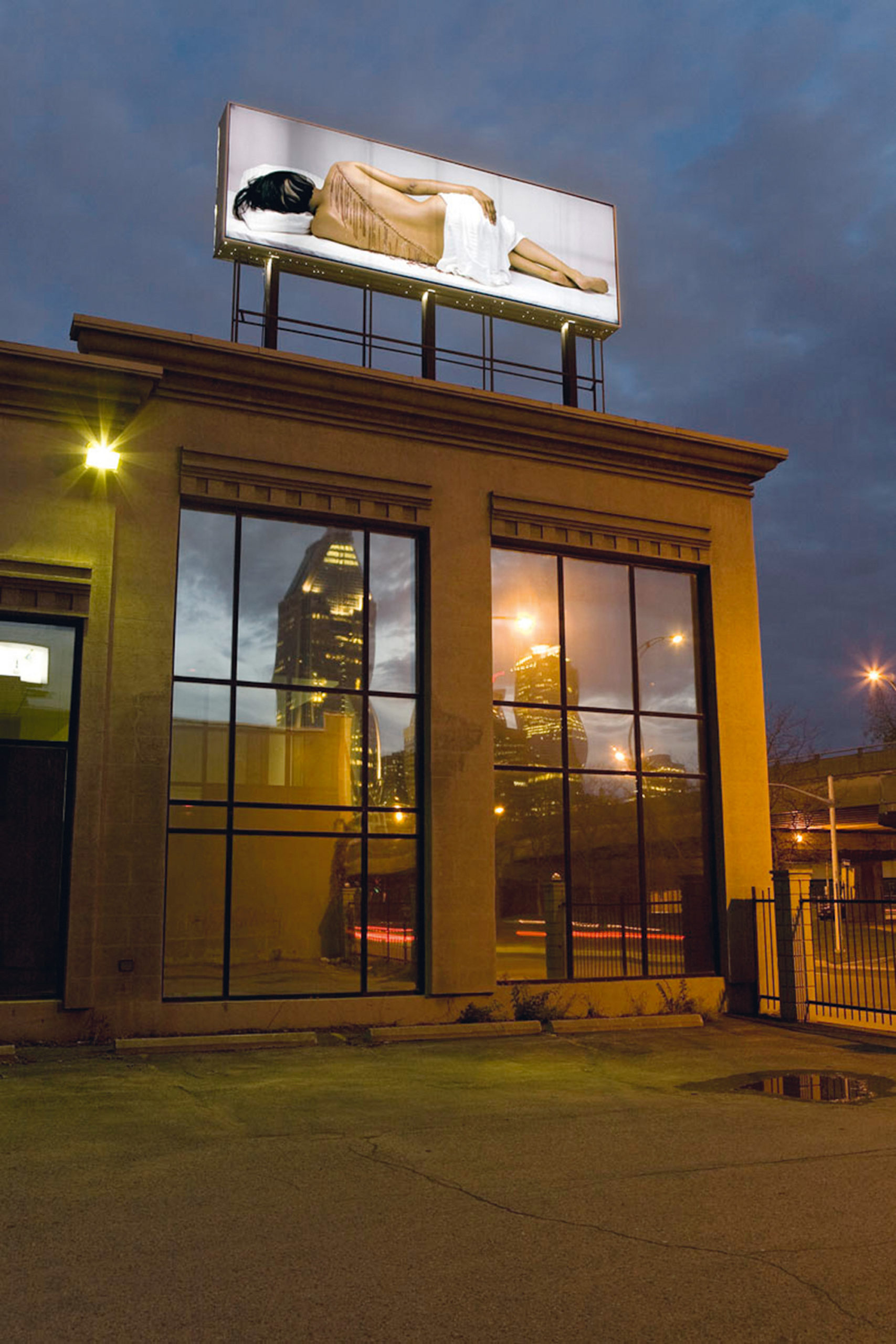
All works courtesy the artist
Nanibush: Looking at Fringe, some people see the image of the scar, and they can’t get past the pain. But, for me, it’s always been a healing image. I’ve never seen it as a violent image. Because of her pose, she looks restful. A lot of your photographs have the body facing away like in Fringe, as in sister (2010) or the X series (2014). You’re looking at somebody’s back, looking at them looking somewhere.
Belmore: If the model is facing away from you, you know they’re looking to something, and you’re looking at them looking, which adds a performative aspect to the image. Because that’s what, as a performance artist, I’ve always been aware of—being watched. You create your own visual space, and then the photographs re-create the performer who is being watched but refusing the gaze.
This interview was originally published in Aperture, issue 240, “Native America,” under the title “All of My Relations.”











